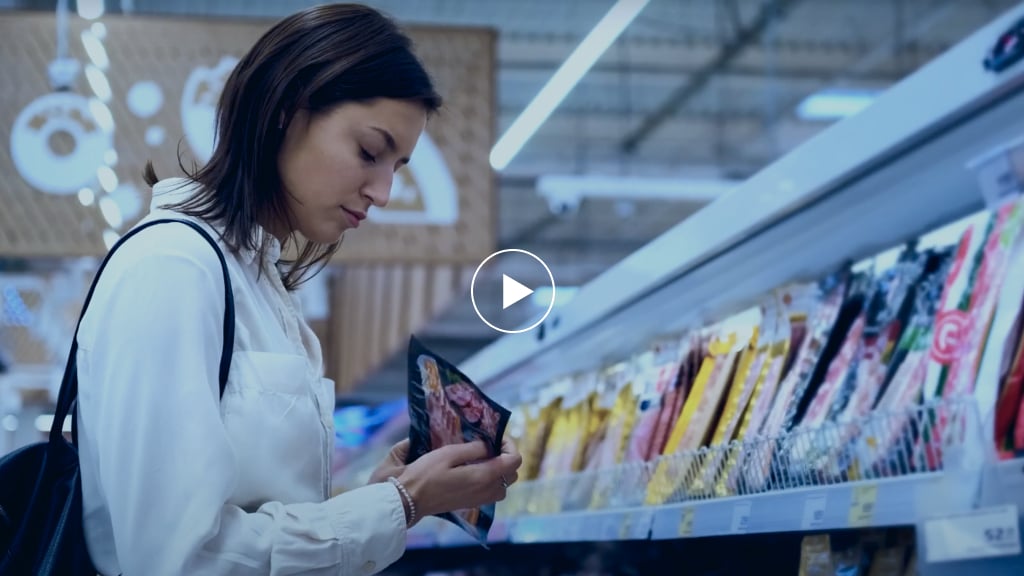Today, FMCG supply chains are fragmented and at greater risk of disruption as black swan events become more frequent.
To address this, FMCG businesses are advised to simplify their supply chains and collaborate more with retail stores. In this article, we'll use the confectionary industry as an example to illustrate how businesses can go about doing this.
Meeting consumer demand

Big opportunities, big challenges. That’s the best way to describe the confectionery market in Europe today. The chocolate market, for instance, is set to grow by USD14.47 billion by 2025, representing huge opportunities for manufacturers.
To enjoy this growth, they need to make sure they can hit demand while it is hot. This means delivering the right inventory flow, through the right channel, to the right locations, at the right time and in perfect condition. The last is particularly important due to the temperature sensitivity of chocolate. It is key that the quality is preserved across its journey from factory to shelves through an unbroken cold chain.
Unfortunately, this is no small feat, and people no longer have faith that products will be on shelves when they need them. In fact, 82% of consumers have concerns that the supply chain will ruin life plans, such as birthdays, vacations and holidays, according to Material Handling and Logistics. Black Friday and Christmas day plans, for example, could be impacted if there aren’t enough boxes of chocolates available online and on shelves in stores.
One reason why confectionery companies get this wrong is that, often, they’re too focused on driving down costs to obtain the best possible price. But in the present climate, when there’s a greater need for more flexible supply chains, this strategy is becoming unsustainable. So, what can they do instead?
Deepen relationships

As the market fluctuates, companies with temperature-sensitive cargo need to be more prepared and resilient; any break in the cold chain could result in spoiled cargo and loss of profits. To maintain a consistent flow of confectionery from warehouse to stores, it's critical to use data for visibility, to manage risks, produce accurate forecasts, improve collaboration with supply chain partners and make adjustments in response to changing conditions.
This data-led approach enables them to co-create mutually beneficial, better ways of doing things, with partners up and downstream who can share knowledge and resources for optimal outcomes. More efficiency; more control, less hassle. Sure, it’ll likely bring cost efficiencies too, but that’s no longer the main objective.
Changing consumer demands and omnichannel sales have meant that having real-time visibility of 'where' and 'how much' your customers are buying has become more important than ever.
Today, it’s all about delivering added value, inventory flow, agility and continuity of service, from factory to the shelves.
But how? Confectionery companies can work together with their retail partners to reduce product waste and drive down carbon emissions through distribution centre bypass and carbon-neutral storage facilities. Furthermore, they can improve lead times by restructuring inventory holdings; with temperature-sensitive cargo, the less time spent between origin and destination, the better. Or they could increase efficiencies by sharing warehouses for joint inventory.
This relationship with retail, in particular, is a high priority because consumers don’t buy confectionery direct from the factory; they buy it from retail. This means any breakdown in the relationship risks a break in the journey and spoiled cargo. This has an outsized impact on the confectionery company, which needs to optimise inventory management to keep retailers’ shelves full using ‘just-in-time’ strategies. So, how can they make sure relationships are nurtured, not neglected?
Simplify with visibility

While many confectionery companies have already invested in visibility tools to develop closer relationships, due to the fragmented nature of their supply chains, they may be overloaded with information and struggling to make sense of the data. The same struggles are also seen on the retailers’ side.
This is where a third party can bridge that gap to make business super simple between the FMCG and retail industries. At Maersk, for example, we believe our end-to-end logistics proposition, independent expertise, network of physical assets and cutting-edge digital platforms — like Captain Peter, which provides real-time reefer data — make us an ideal partner to simplify FMCG and retail relationships.
Through collaboration, we can bring together the two industry verticals. By providing insights and expertise, we can integrate your supply chain using a transparent and holistic approach to your logistics. This makes it easier for FMCG and retail businesses to get the necessary visibility to make value-focused decisions. Drawing on our supply chain experience, we can design tailor-made, integrated cold chain solutions to keep goods moving and relationships healthy during the most challenging times so that the confectioners can focus on flavour.
By trusting us to connect their supply chains with retailers, confectionery businesses can focus on making great products.
For more FMCG content in Europe visit our FMCG hub.
Still unsure about the best solution for your supply chain?
Thank you!
Something went wrong
Still unsure about the best solution for your supply chain?
Contact our expert customer support team who would be happy to help find exactly what you’re looking for.
Anything you need, we’re here to help
By submitting this form, I agree to receive logistics related news and marketing updates from A. P. Moller-Maersk and its affiliated companies via e-mail. I understand that I can opt out of such Maersk communications at any time. To see how we process your personal data, please see our Privacy Notification.
